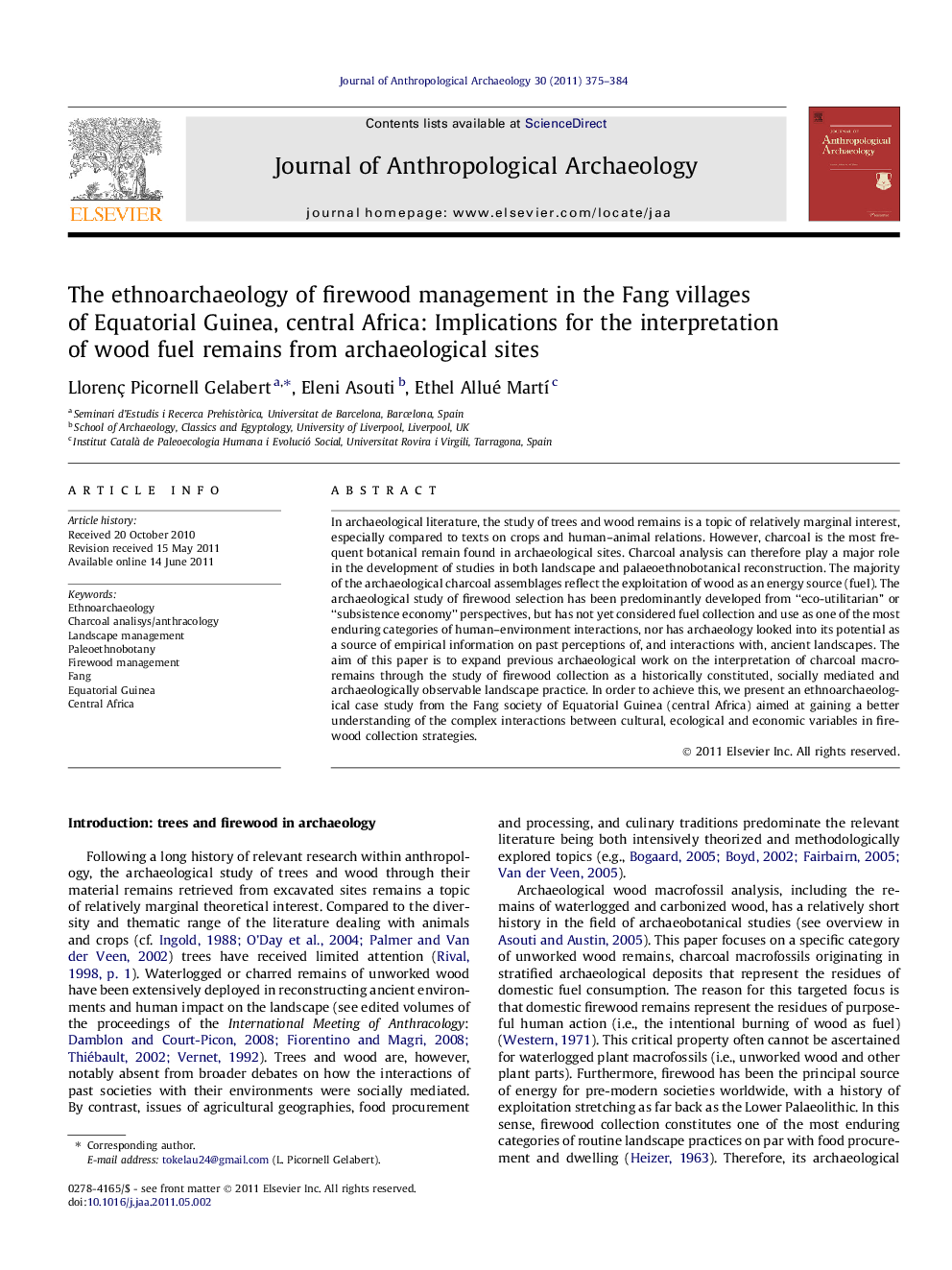| Article ID | Journal | Published Year | Pages | File Type |
|---|---|---|---|---|
| 1035046 | Journal of Anthropological Archaeology | 2011 | 10 Pages |
In archaeological literature, the study of trees and wood remains is a topic of relatively marginal interest, especially compared to texts on crops and human–animal relations. However, charcoal is the most frequent botanical remain found in archaeological sites. Charcoal analysis can therefore play a major role in the development of studies in both landscape and palaeoethnobotanical reconstruction. The majority of the archaeological charcoal assemblages reflect the exploitation of wood as an energy source (fuel). The archaeological study of firewood selection has been predominantly developed from “eco-utilitarian” or “subsistence economy” perspectives, but has not yet considered fuel collection and use as one of the most enduring categories of human–environment interactions, nor has archaeology looked into its potential as a source of empirical information on past perceptions of, and interactions with, ancient landscapes. The aim of this paper is to expand previous archaeological work on the interpretation of charcoal macro-remains through the study of firewood collection as a historically constituted, socially mediated and archaeologically observable landscape practice. In order to achieve this, we present an ethnoarchaeological case study from the Fang society of Equatorial Guinea (central Africa) aimed at gaining a better understanding of the complex interactions between cultural, ecological and economic variables in firewood collection strategies.
► An ethnoarchaeological analysis of firewood management among the Fang is presented. ► We discuss it as historically constituted and socially mediated landscape practices. ► In relation to this, we analyze the archaeological visibility of theses practices. ► Accordingly, different approaches to archaeological charcoal analysis are discussed.
